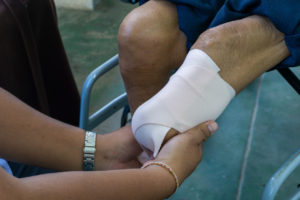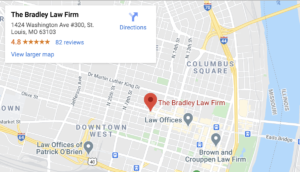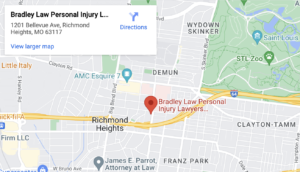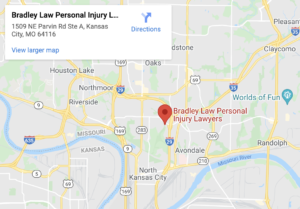
Amputations happen with surprising frequency. In an average year, 185,000 people in the U.S. undergo an amputation. These amputations range in severity from a fingertip to multiple limbs.
Prostheses can often help amputees regain some lost functions. But even with a prosthesis, you could still experience substantial pain, multiple surgeries, and permanent disfigurement from your amputation.
Below, you will learn about the intended functions of your limbs, the causes of an amputation injury, and how you can seek compensation for the losses it causes.
Table of Contents
What is the Function and Structure of Your Limbs?
Your limbs perform many functions that separate humans from animals. You can use tools because of your hands and walk upright because of your hips and feet. The limbs utilize a complex interplay of the musculoskeletal, circulatory, and nervous systems to perform these functions.
Bones give your limbs structure and contain minerals like calcium and phosphorus that give them rigidity. This rigidity gives bones the strength needed to support your weight and the objects you lift, carry, and manipulate.
Ligaments hold your bones together at the joints. The ligaments also provide flexibility and elasticity so you can move your joints smoothly without the bones dislocating.
Muscles anchor to bones through tendons and give your body strength and motion. When your muscles contract and relax, they move your skeleton to perform actions like writing and jumping.
The nervous system causes the muscles to perform these actions. Nerves throughout your muscles carry motor signals from your brain. These motor signals cause the muscles to move according to your conscious direction.
The nerves also carry sensory signals back to the brain. These sensory signals give your brain information like pressure, temperature, and texture. Sensory signals also tell your brain when you experience pain in your limbs.
All these living tissues, including your bones, need oxygen for cell metabolism. Without oxygen, your cells die. The time your cells can live without oxygen varies from a few minutes for nerve cells to a few hours for muscle cells.
Blood delivers oxygen to your cells. Arteries carry oxygenated blood to your cells, and veins carry oxygen-depleted blood back to your heart and lungs. These blood vessels run throughout your limbs.
How Does an Amputation Injury Happen?
Over half of amputations are medically necessary, resulting from diseases like vascular diseases, diabetes, and cancers. But 45% of amputations result from trauma. These happen because an injury damages the tissue so severely that doctors cannot reattach it or leave it attached.
Most of the time, amputations are necessary because damage to the blood vessels prevents circulation to the damaged limb. Without blood circulation, the cells of the limb will die. Dead cells cause gangrene as they decompose, and gangrene can cause sepsis or even death if left untreated.
Amputations can prove necessary due to damage to other tissues. If muscles get badly mangled, bones get crushed, or nerves get stretched or torn, the limb might not function. By removing the limb, you have the chance of recovering some function with a prosthesis.
Amputation injuries take two forms:
Surgical Amputation
Surgical amputations are necessary when your limb gets so severely damaged that doctors must remove it. These injuries can happen in almost any type of accident. Leading causes of lower limb amputations include traffic accidents such as car accidents, pedestrian accidents, and motorcycle accidents.
Leading causes of upper limb amputations include workplace accidents. These accidents often involve a finger, hand, or arm getting crushed in a machine or cut by a tool.
Traumatic Amputation
Traumatic amputations happen when your limb gets severed in an accident.
Doctors can sometimes reattach severed limbs through a surgery called replantation, but reattachment will depend on many factors, including:
- The amount of time the limb was severed
- The damage to the limb and the stump
- Contamination of the injury by dirt, chemicals, or bacteria
Doctors may try replantation if you can reach the hospital shortly after the injury. But some injuries, like dog bites, often involve too much tissue damage and contamination to replant even if you reach the hospital quickly.
What Are Some Complications of an Amputation Injury?
Almost all amputations involve some complications afterward. Some of the most common include:
Infection
Infections happen when microorganisms enter your body. After all, when you experience an amputation, you have a massive open wound where bacteria and viruses can enter.
Microorganisms in your body multiply and compete with your cells for resources. They also release toxic substances that can make you sick.
Your body triggers an immune response to the invaders, resulting in your injury swelling. This reduces blood flow and traps the microorganisms in the injured area. You also run a fever to kill the microorganisms.
The effects of these microorganisms and your body’s response can make you extremely ill. In severe cases, you may develop sepsis and die from an infection.
Phantom Limb Syndrome
Phantom limb syndrome is the most common complication of amputation. About 80% of amputees experience phantom limb syndrome.
This complication happens when you experience sensations that appear to come from your amputated limb.
These sensations can include:
- Pain
- Aches
- Itchiness
- Tingling
These sensations are not imaginary. They result from the brain using an outdated map of your body. When nerves that used to connect to your amputated limb experience sensations, your brain misplaces them in their old location.
Mental Anguish
Over 30% of amputees experience depression due to:
- Grief over the loss of their limb
- Fear of the future without a limb
- Anguish about social acceptance of their disfigurement
This mental anguish can lead to further problems, including chronic anxiety, substance abuse, and suicidal thoughts.
How Do You Get Compensation for an Amputation Injury?
You can seek personal injury compensation if your amputation injury resulted from someone else’s negligence. To recover compensation, you must prove that the other party failed to exercise reasonable care.
This usually requires you to pinpoint a specific action that was unreasonably careless. In a pedestrian accident, for example, a driver who hit you while texting failed to exercise reasonable care by driving while distracted.
If you prove negligence, it’s possible to recover economic and non-economic damages. After all, when you have an amputation injury, you will probably have massive medical bills, yet you likely cannot work. You will also need to deal with the physical disabilities and mental anguish of losing a limb.
To learn the compensation you can seek for these and other effects of an amputation injury, contact Bradley Law Personal Injury Lawyers to schedule a free consultation at (314) 400-0000.




